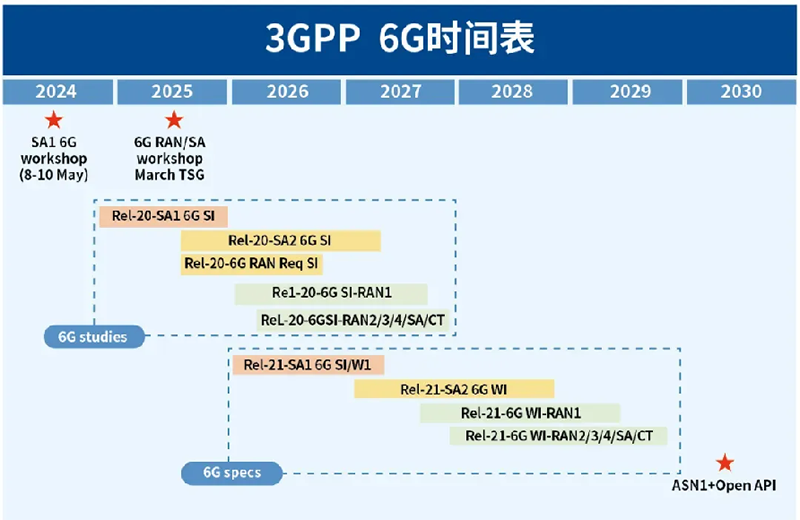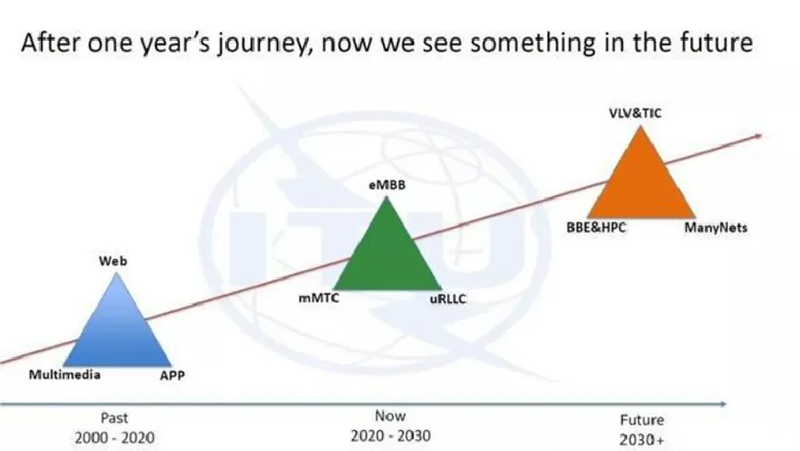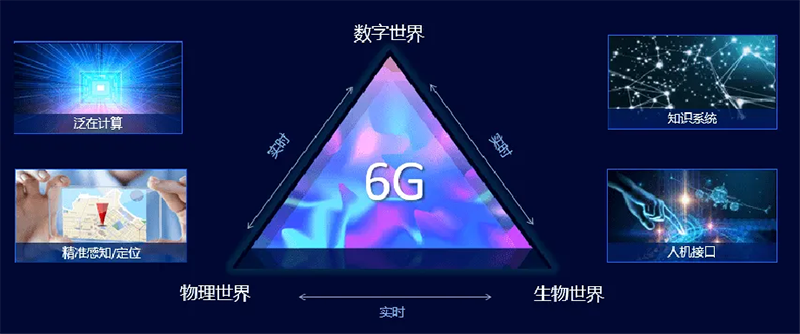Recently, at the 103rd Plenary Meeting of 3GPP CT, SA, and RAN, the timeline for 6G standardization was decided. Looking at a few key points: First, 3GPP’s work on 6G will begin during Release 19 in 2024, marking the official launch of work related to “requirements” (i.e., 6G SA1 service requirements), and the real start of formulating standards and specifications towards demand scenarios. Second, the first 6G specification will be completed by the end of 2028 in Release 21, meaning that the core 6G specification work will be essentially established within 4 years, clarifying the overall 6G architecture, scenarios, and evolution direction. Third, the first batch of 6G networks is expected to be commercially deployed or in trial commercial use by 2030. This timeline is consistent with the current schedule in China, implying that China is likely to be the first country in the world to release 6G.
**1 – Why do we care so much about 6G?**
From the various information available in China, it is evident that China places great importance on the advancement of 6G. The pursuit of dominance in 6G communication standards is a must, driven by two main considerations:
**Industrial Competition Perspective:** China has had too many and too painful lessons from being subject to others in cutting-edge technologies in the past. It has taken a long time and a lot of resources to break free from this situation. As 6G is the inevitable evolution of mobile communications, competing for and participating in the formulation of 6G communication standards will ensure that China occupies an advantageous position in future technological competition, greatly promoting the development of related domestic industries. We’re talking about a market worth trillions of dollars. Specifically, mastering the dominance of 6G communication standards will help China develop autonomous and controllable information and communication technologies. This means having more autonomy and voice in technology selection, product research and development, and system deployment, thereby reducing reliance on external technologies and lowering the risk of external sanctions or technology blockades. At the same time, dominating communication standards will help China gain a more advantageous competitive position in the global communications market, thereby safeguarding national economic interests and enhancing China’s influence and voice on the international stage. We can see that in the past few years, China has put forward a mature 5G China solution, greatly enhancing its influence among many developing countries and even some developed countries, while also improving China’s international image on the global stage. Think about why Huawei is so strong in the international market, and why China Mobile is so respected by its international peers? It’s because they have China behind them.
**National Security Perspective:** China’s pursuit of dominance in mobile communication standards is not only about technological development and economic interests but also involves national security and strategic interests. Undoubtedly, 6G is transformative, encompassing the integration of communication and AI, communication and perception, and ubiquitous connectivity. This means that a vast amount of personal information, corporate data, and even national secrets will be transmitted through 6G networks. By participating in the formulation and implementation of 6G communication standards, China will be able to incorporate more data security protection measures into the technical standards, ensuring the security of information during transmission and storage, and enhancing the defense capabilities of future network infrastructures, reducing the risks of external attacks and internal leaks. This will undoubtedly greatly assist China in occupying a more advantageous position in the inevitable future network warfare and enhance the country’s strategic defense capabilities. Think about the Russia-Ukraine war and the current US-China tech war; if there is a third world war in the future, the main form of warfare will undoubtedly be network warfare, and 6G will then become the most powerful weapon and the most solid shield.
**2 – Back to the technical level, what will 6G bring us?**
According to the consensus reached at the ITU’s “Network 2030″ workshop, 6G networks will propose three new scenarios compared to 5G networks: the integration of communication and AI, the integration of communication and perception, and ubiquitous connectivity. These new scenarios will further develop based on the enhanced mobile broadband, massive machine-type communications, and ultra-reliable low-latency communications of 5G, providing users with even richer and more intelligent services.
**Communication and AI Integration:** This scenario will achieve deep integration of communication networks and artificial intelligence technologies. By leveraging AI technologies, 6G networks will be able to realize more efficient resource allocation, smarter network management, and optimized user experiences. For example, AI can be used to predict network traffic and user demands, enabling proactive resource allocation to reduce network congestion and latency.
**Communication and Perception Integration:** In this scenario, 6G networks will not only provide data transmission services but will also have the ability to perceive the environment. By integrating sensors and data analysis technologies, 6G networks can monitor and respond to changes in the environment in real-time, providing users with more personalized and intelligent services. For example, in intelligent transportation systems, 6G networks can ensure safer driving and more efficient traffic management by sensing the dynamics of vehicles and pedestrians.
**Ubiquitous Connectivity:** This scenario will realize seamless connectivity and collaboration among various devices and systems. Through the high-speed and low-latency features of 6G networks, different devices and systems can share data and information in real-time, enabling more efficient collaboration and smarter decision-making. For example, in intelligent manufacturing, various devices and sensors can achieve real-time data sharing and collaborative control through 6G networks, improving production efficiency and product quality.
In addition to the three new scenarios mentioned above, 6G will further enhance and expand the three typical 5G scenarios: enhanced mobile broadband, massive IoT, and low-latency high-reliability communications. For example, by providing super wireless broadband technology, it will offer higher data transmission speeds and smoother immersive communication experiences; by enabling extremely reliable communications, it will facilitate machine-to-machine collaborative interactions and real-time human-machine operations; and by supporting ultra-large-scale connectivity, it will enable more devices to connect and exchange data. These enhancements and expansions will provide a more solid infrastructure support for the future intelligent society.
It can be affirmed that 6G will bring tremendous changes and opportunities to future digital life, digital governance, and digital production. Finally, although this article mentions a lot of competition, industrial competition, and national competition, it should be noted that the technology and standards for 6G networks are still in the research and development stage and require global cooperation and efforts to succeed. The world needs China, and China needs the world.
Chengdu Concept Microwave Technology CO.,Ltd is a professional manufacturer of the 5G/6G RF components in China , including the RF lowpass filter , highpass filter , bandpass filter , notch filter/band stop filter , duplexer,Power divider and directional coupler . All of them can be customized according to your requrements .
Welcome to our web : www.concept-mw.com or reach us at: sales@concept-mw.com
Post time: Apr-25-2024



